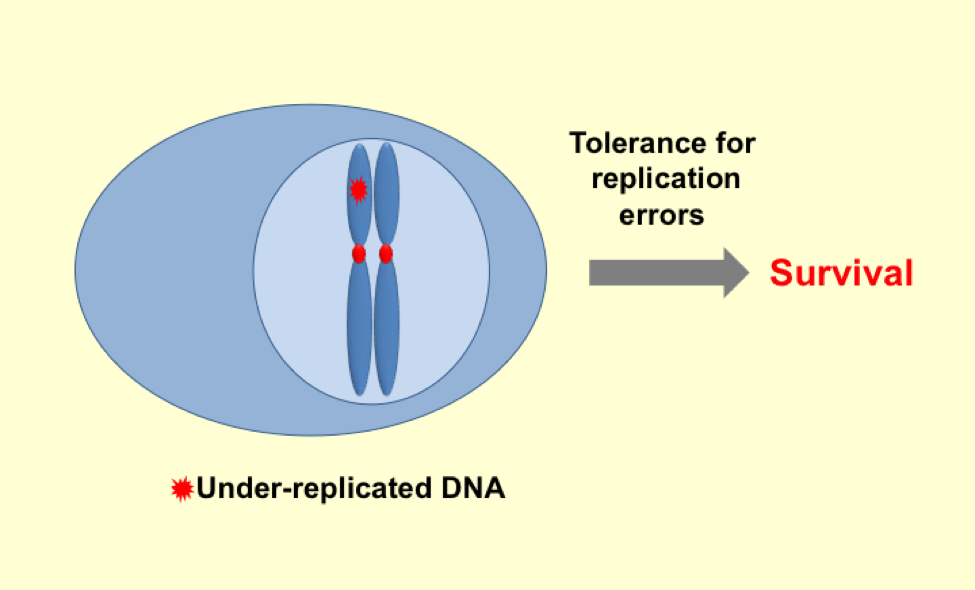Discovery by the Bielinsky lab opens doors to new strategies for combating cancer.

When it comes to replicating their DNA so they can propagate, normal cells are perfectionists. Cancer cells, on the other hand, have no problem tolerating mistakes while copying their DNA. In fact, messed-up DNA is a big part of what lets them keep changing and eluding the body’s efforts to fight them.
Now, University of Minnesota researchers have figured out how some cells do an end-run on replication quality control — opening the door to developing new cancer-quashing treatments.
Yee-Mon Thu and Anja-Katrin Bielinsky together with colleagues in the University’s Department of Biochemistry, Molecular Biology and Biophysics and Informatics Institute described their discovery of the mechanism behind the ability to overcome barriers to faulty DNA replication in the scientific journal Cell Reports April 28. Bielinsky is co-director of the Genetic Mechanisms of Cancer program in the Masonic Cancer Center.
“We think we found the pathway that enables cancer cells to get away with doing a poor job of replicating their DNA,” said Thu.

The study started as a quest to understand how cells proceed to divide despite DNA errors. The team’s tool of choice was to globally analyze changes in protein regulation that are triggered by faulty DNA replication. Because these events can be modeled in yeast mutants, which are easier to manipulate than cancer cells, the researchers utilized yeast to home in on the crucial players. Then they conducted further experiments that allowed them to identify the specific mechanism that lets faulty cells survive. Along the way, the team developed specific upgrades to their tool that will come in handy to other scientists.
Since the key proteins are highly conserved between yeast and human cells, the researchers suspect the mechanism they discovered is also what lets cancer cells get away with replication errors. They’re now using their new tool to look at the protein make-up of cancer cells and see whether their suspicion is correct. If it is, the finding could lead to the development of new anti-cancer therapies.
Bielinsky credits the University’s strong proteomics and bioinformatics programs with the success of this study. “We have a fantastic history of proteomics research — it’s a real strength,” she says. “Also, the University has made big investments in bioinformatics in recent years. Those have really paid off for researchers like myself.” — Mary Hoff
“We think we found the pathway that enables cancer cells to get away with doing a poor job of replicating their DNA." - Yee-Mon Thu